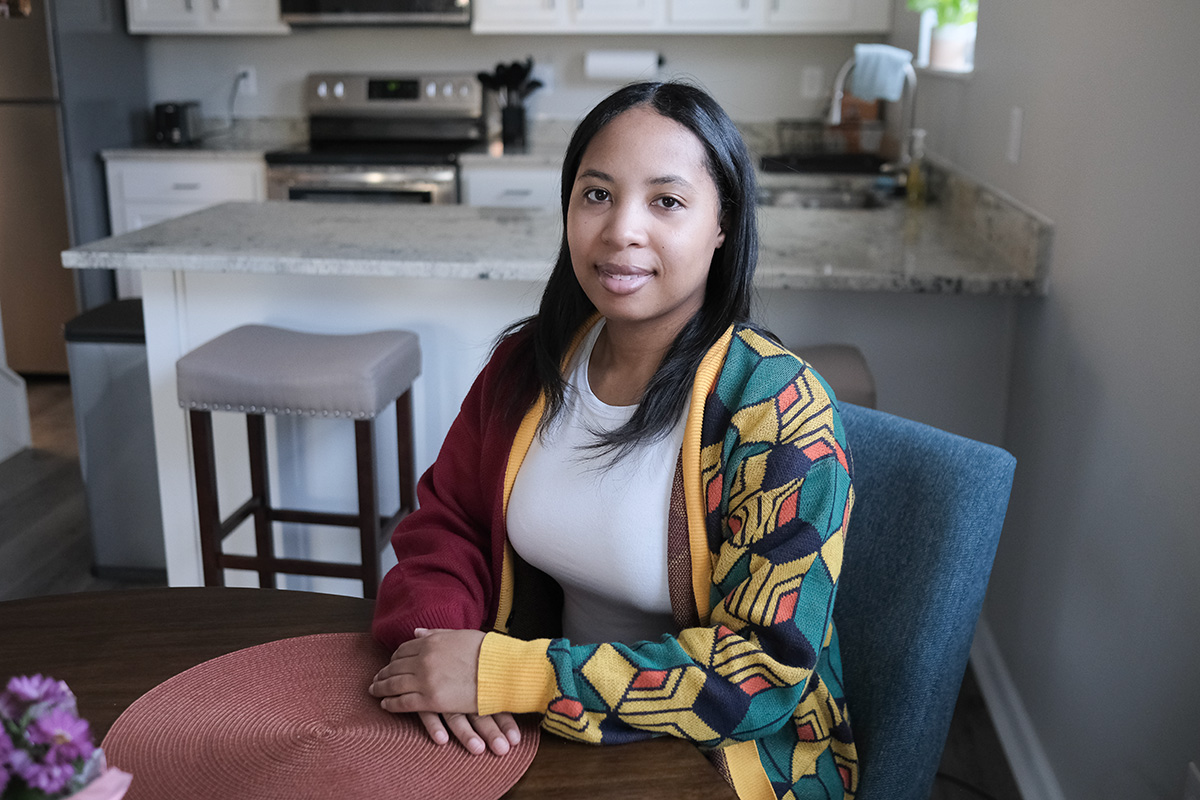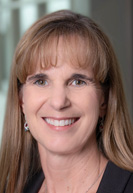Subscriber Benefit
As a subscriber you can listen to articles at work, in the car, or while you work out. Subscribe NowWhen Tierra Sims decided last year that it was time to move out of her parents’ home in Fishers, she was open to either renting an apartment or buying a home. Today, she’s a brand-new homeowner—she closed in March on a newly built 1,633-square-foot house in the Old Southside neighborhood just south of downtown Indianapolis.
Sims, 29, said she loves the extra space—and the eight-minute commute. “That was one of the things I was looking for when looking for a home. I wanted something closer to downtown, inside the [Interstate 465] loop because I’m always downtown, whether it’s for work or hanging out with friends,” she said.
Sims became a homeowner with the help of a special purpose credit program—a tool that a growing number of lenders are adopting to help improve credit access for underserved groups.
Special purpose credit programs, or SPCPs, have been around since the 1970s, but they’ve recently become a lot more popular.
In the Indianapolis market, the Indianapolis Neighborhood Housing Partnership, J.P. Morgan Chase & Co., Old National Bank, First Financial Bank, Key Bank and Fifth Third Bank are among the lenders who have rolled out SPCPs for mortgage lending, business lending or both in the past several years.
Each program is a little different, and lenders that have created an SPCP don’t necessarily offer it in every market they serve. But all the programs have a similar aim—to reach borrowers who have traditionally found it more difficult to access financing.
The Indianapolis Neighborhood Housing Partnership, the entity through which Sims obtained her mortgage, rolled out its SPCP, called Community Lift, in October. To date, INHP has closed on six mortgage loans through the program.
INHP’s program, which lends exclusively in Marion County, targets two distinct groups of low-to-moderate-income borrowers: Those who belong to a racial or ethnic minority and borrowers of any race who purchase a home in a census tract where a majority of residents are minorities.
For qualifying borrowers, Community Lift’s terms include up to 100% financing at interest rates about a point lower than current market rates. (Sims said the interest rate on her 30-year mortgage is less than 6%.)
Sims said her credit score is strong. But that’s not necessarily a requirement for Community Lift; borrowers can qualify with credit scores as low as 580, which by many standards would be considered subprime.
“It provides support specifically for underrepresented people and communities,” said Joe Hanson, the chief strategy officer at INHP.

Racial disparities
Federal Home Mortgage Disclosure Act data shows a gap between minority borrowers and white borrowers when it comes to traditional mortgage approvals.
According to a September 2023 report by the Consumer Financial Protection Bureau that is based on 2022 Home Mortgage Disclosure Act national data:
◗ 6.7% of white applicants had their mortgage applications denied in 2022;
◗ 9.6% of Asian applicants were denied;
◗ 12% of Hispanic applicants were denied;
◗ 13.8% of applicants classified as “other minority” were denied;
◗ 16.8% of Black applicants were denied.
These racial disparities are long-standing. A 2020 Consumer Financial Protection Bureau report that included data from 2004 to 2019, for instance, showed denial rates for white applicants were lower than that of other racial groups every year.
Leo Lopez, who is the Indianapolis-based community lending market executive for Evansville-based Old National Bank, said minority borrowers also tend to have lower credit scores than do white borrowers.
Lopez, who is Latino, said long-standing societal disparities in wealth, asset levels and access to education—including financial education—help explain the racial gap in credit scores. “You have less money, you get into a pickle, and you’re less likely to fix it,” he said. “It’s that litany of things that add up to the averages being what they are.”
Gaining traction
SPCPs were created in the 1970s, but they’ve only recently become popular with lenders. One reason interest has picked up: Federal agencies have explicitly green-lighted such programs, which has made lenders more comfortable with the concept.
“People have shied away from [SPCPs] until they got some protection from the regulators,” said Roddell McCullough, chief corporate responsibility officer at Cincinnati-based First Financial Bank.
First Financial doesn’t currently offer any SPCPs. But the bank continually evaluates how it serves low-to-moderate-income communities, and it might launch SPCPs in the future, McCullough said.
In response to lender queries, the U.S. Department of Housing and Urban Development in December 2021 issued legal guidance. Lenders can design and implement SPCPs that are consistent with fair-lending laws, particularly the Equal Credit Opportunity Act and its implementing regulations known as Regulation B, and the Fair Housing Act, the guidance said.
Then, in February 2022, the Consumer Financial Protection Bureau, HUD, the Federal Deposit Insurance Corp. and several other federal agencies jointly came out in support of the use of SPCPs.
“Working with our agency partners, the CFPB is committed to exploring incentives that better serve those who have been historically shut out of the mainstream credit markets,” the CFPB said in a prepared statement at the time.
The federal statements were “100% a nice nudge in that direction” of offering SPCPs, said Justin Corio, the Buffalo, New York-based senior manager of home lending product for KeyBank.
Cleveland-based KeyBank offers two different SPCPs in the Indianapolis metro area.
Its KeyBank Home Buyer Credit, which launched in September 2022, is for owner-occupied homes in census tracts where more than 50% of residents are minorities. That program offers borrowers up to $5,000 to help with closing costs.
Another program, the Key Opportunities Home Equity Loan, launched in March 2023. It is designed for borrowers who live in a census tract that is both majority-minority and low-to-moderate income. Borrowers under this program can receive a discounted interest rate on loans of up to 80% of their home’s combined loan-to-value ratio.
J.P. Morgan Chase &. Co.’s mortgage-focused SPCP program launched nationwide in 2021. In Indianapolis, Chase homebuyers in minority neighborhoods can receive a $5,000 Chase Homebuyer Grant to help with a down payment or closing costs or to lower their interest rate by paying an upfront fee, called mortgage points.
Fifth Third Bank launched its mortgage-based SPCP in select markets in February 2023. The program launched this week in Indianapolis and will eventually be available throughout the Cincinnati-based bank’s operating footprint.
The business case
SPCPs can be a way for banks to gain business in certain geographic markets or among certain types of borrowers.
Old National has an SPCP in the Indianapolis market for mortgage lending, but Lopez said the bank is putting most of its SPCP focus on its small business lending program, called Empowerment. That program launched in December 2022 in a handful of Old National’s largest markets in Indiana and other states, including Indianapolis, Evansville and the greater Chicago market, which includes northwestern Indiana. Eventually, Lopez said, the bank wants to offer the program throughout its entire footprint.
Lopez said the Empowerment program came about when Old National CEO Jim Ryan tasked him with figuring out how the bank could do more lending to minority-owned businesses.
“Our primary contention is that there are good businesses that are not getting funded,” Lopez said. “There’s an incredible business case in the long term for doing this.”
Empowerment offers loans of up to $5 million, including lines of credit, equipment financing and owner-occupied real estate loans, to minority- and women-owned businesses with annual revenue of less than $25 million. The program is for borrowers who might not otherwise have the collateral or credit score to qualify for a business loan. These borrowers also gain access to coaching on how to improve their credit scores.
But borrowers through the program still need to show they have a successful business, Lopez said, and Old National charges Empowerment borrowers the same interest rate other business borrowers pay.
“This is not a subprime program,” he said.
In its initial year of operation, Lopez said, Old National has approved $25 million in loans through the Empowerment program. The bank now has a four-person team dedicated to the program, with plans to soon add a fifth. “We’ve had wonderful wins, some great stories of people we’ve helped—including in Indianapolis,” he said.
Another key success metric for lenders—how the SCPC loans perform relative to other loans—is yet to be determined.
New York City-based J.P. Morgan Chase & Co. launched a small-business-focused SPCP in 2022, starting with a pilot test in Dallas, Detroit, Houston and Miami before rolling it out across the bank’s footprint by November of that year.
The program is for small businesses in majority-minority neighborhoods. “It’s not a grant. It’s not a handout. It’s a hand up,” said Deb Lawrence, the Columbus, Ohio-based director of community business strategies at Chase.
Lawrence said the bank applies the same risk tolerance for its SPCP loans as it does for other loans. But Chase doesn’t yet have sufficient data about how the loans will perform, including what percentage of borrowers might struggle to repay. “It’s still a little bit too early,” she said.
At the INHP, Hanson said his organization periodically sells its mortgage loans to other lenders as a way to generate money so it can make additional loans.
The first few SPCP mortgages have just gone to market, Hanson said, and INHP will offer another batch for sale in the fall. “So long as there continues to be an appetite for this kind of credit, then we’ll be able to continue to offer it.”•
Please enable JavaScript to view this content.



Offering loans to people whose credit scores are just below the standards are what led to the housing/banking crisis in 2005-2008. I think this is a good program for a few loans in each market for the reasons given, but hopefully they don’t roll this out to everyone.
Asians are never mentioned in these stories, although they have the highest average income and credit scores of all four major groups. Anyway, we have loads of data on financial habits and likelihood of default. Asians, then whites, then Latinos, then blacks have the highest credit scores. That’s also the same batting order for default rates (lowest to highest) even when adjusting for income. You don’t have to conjure up some complicated historical explanation for loan denial rates, its simply a reflection of risk based on decades of information.